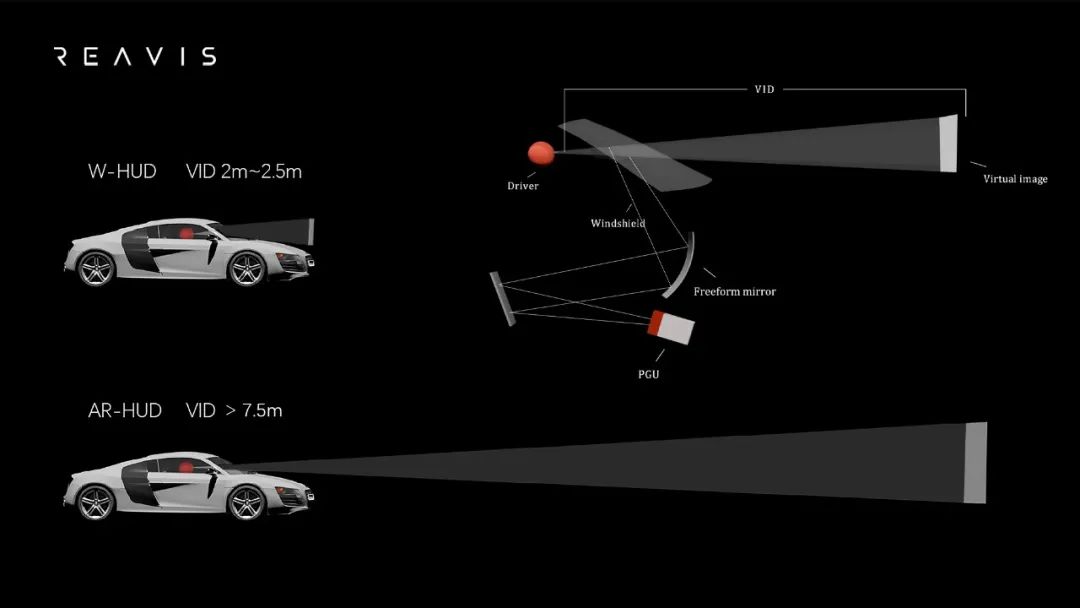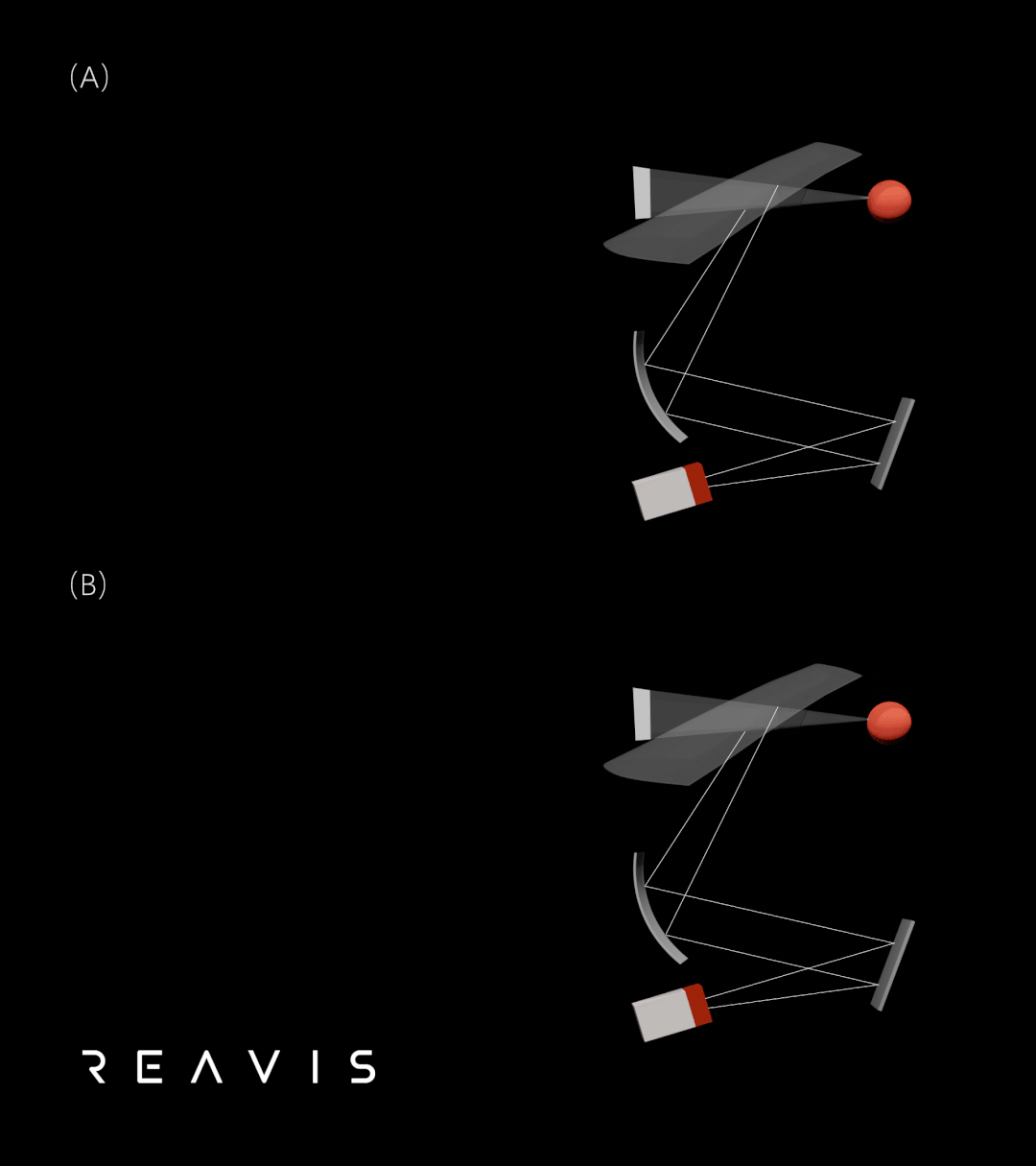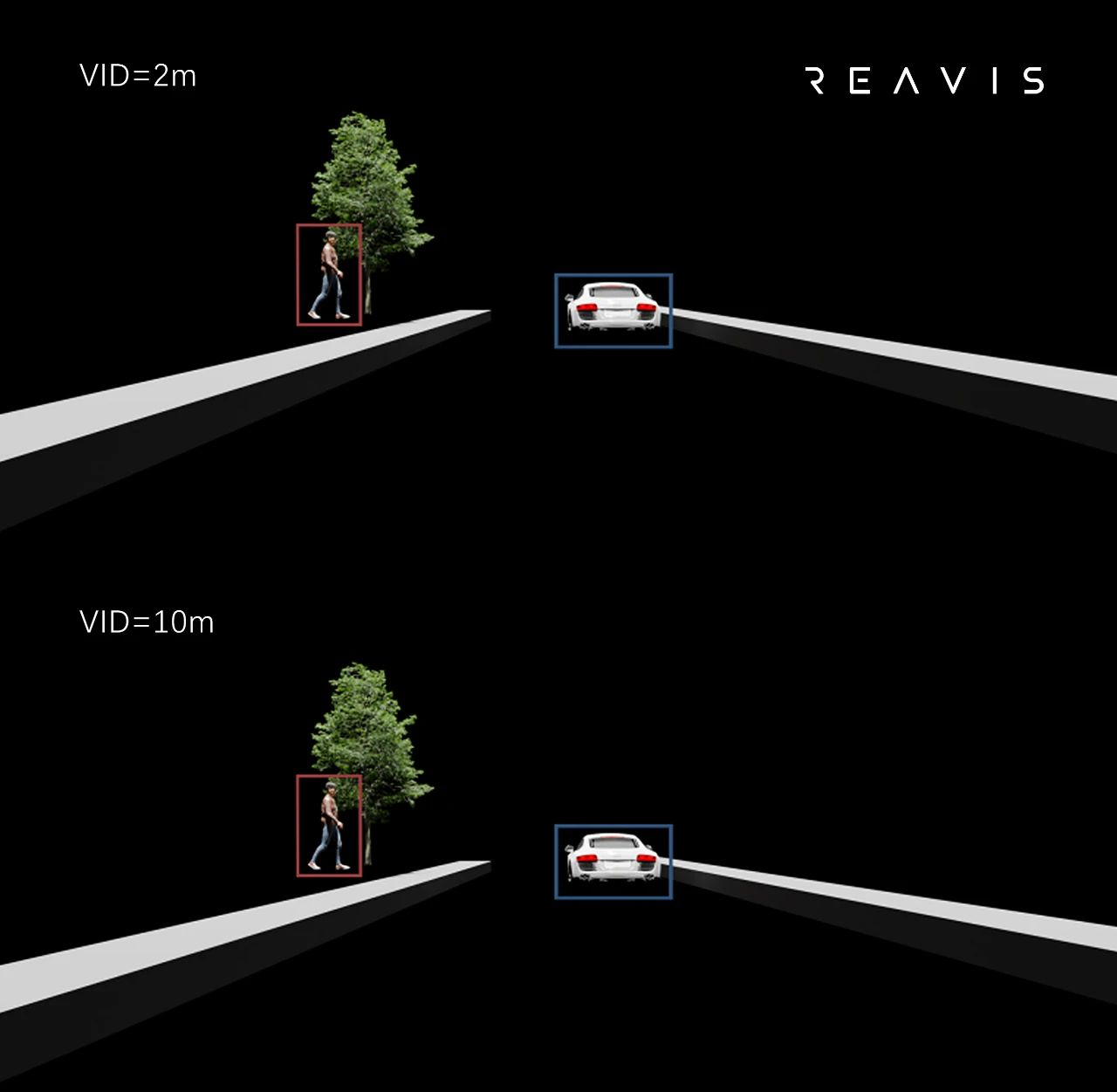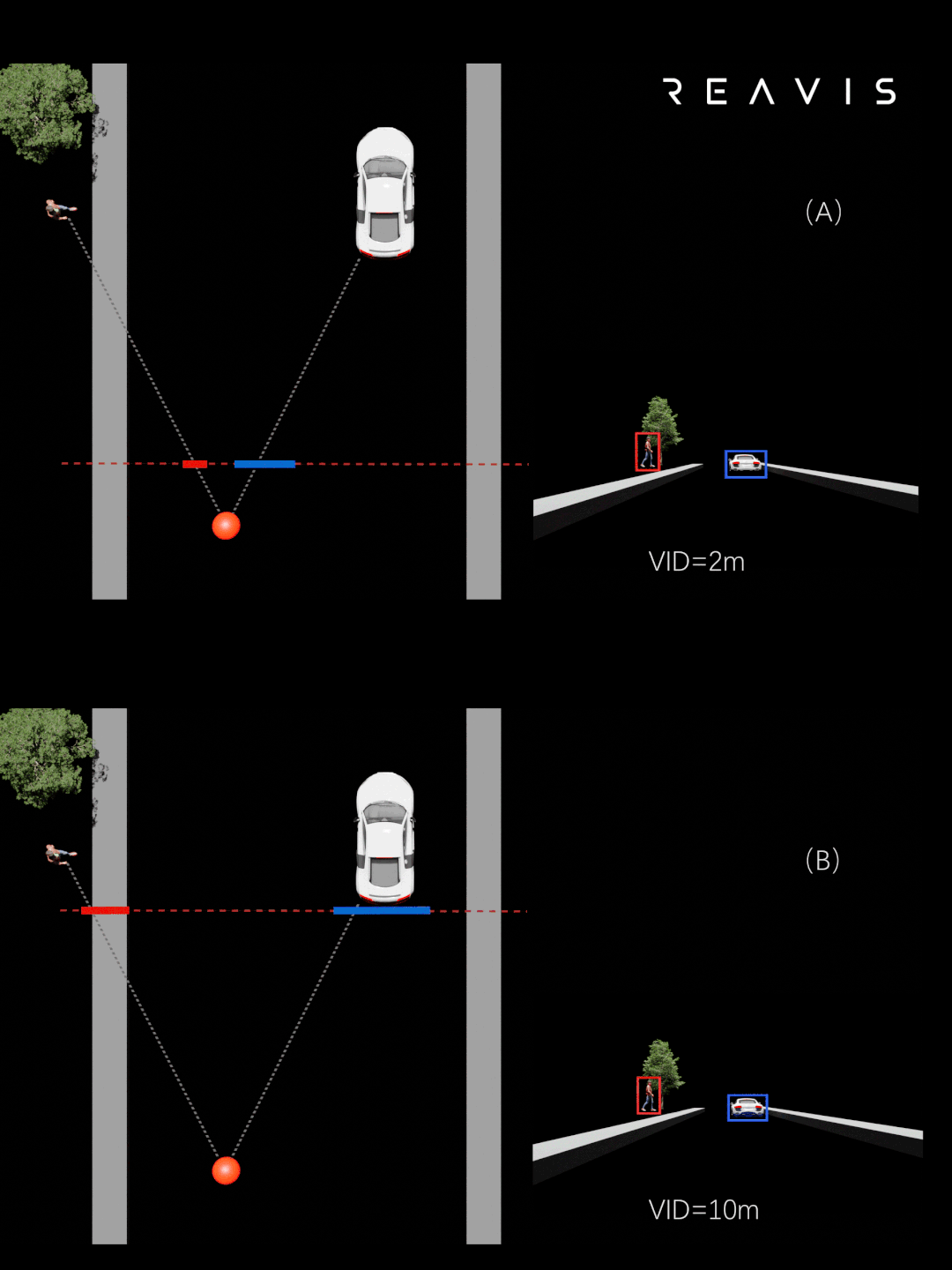Definition and Design
The full name of VID is Virtual Image Distance, which refers to the distance between the projected virtual image and the human eye pupil, as shown in Figure (1). For HUD, the VID of W-HUD is usually set between 2m to 3m (meters), while for AR-HUD, it ranges from 7.5m to 10m, with even further distances reaching 10m to 15m[1].

During the optical design of HUD, the design values of FOV and VID are determined according to actual requirements, and then preliminary placement of optical lenses is based on the space reserved in the vehicle. As we introduced in the previous section on Freeform Surface Principles, the common optical architecture used in HUD consists of a single freeform mirror plus a planar mirror or a double freeform mirror. Regardless of whether it's a single or double curvature, with the same FOV, the larger the VID, the longer the corresponding system optical distance (the distance between two mirrors + the distance between the mirror and the PGU), and consequently, the larger the volume of the final HUD[2]. This is also a direct reason why AR-HUD is larger in volume than W-HUD.
However, in practical situations, the space reserved in the vehicle body is usually limited, requiring that the volume of the HUD cannot be too large. In this case, it is impossible to match the design with a large VID by increasing the system optical distance. Another method is to increase the magnification of the freeform mirror (which can be simply understood as an increase in the curvature of the freeform mirror, but the actual design is more complex) while keeping the optical distance fixed to achieve a larger VID (as shown in Figure (2)(B)). However, this method also has its drawbacks: increasing the magnification ratio makes it more difficult to control other optical parameters of the entire system, and it also requires higher system tolerances. In addition to these two traditional methods, the use of double curvature and the use of new optical systems also help achieve a larger VID in a smaller HUD volume.

Choosing VID
It can be seen that the design values of VID for W-HUD and AR-HUD are different. W-HUD typically provides continuous display, constantly showing important information that the driver needs to pay attention to, such as speed, speed limit, and warning reminders. Therefore, the content of W-HUD usually requires a larger Lower Downward Angle (LDA), and the display position is above the edge of the dashboard (the VID at this distance is usually 2m to 2.5m), achieving the following: (1) the content of W-HUD is below the line of sight, avoiding interference with the scene directly ahead; (2) when the driver is driving normally, the eyes are in a relaxed state, focusing at a distance, and a W-HUD at a close distance will naturally blur. Combining these two points, the display content of W-HUD will not interfere with driving.
AR-HUD typically provides intermittent display, showing AR-assisted driving content for short periods only when specific scenarios occur, such as lane changes, turns, front collision warnings, and lane recognition during navigation. When these specific scenarios do not occur, the AR display area does not show any content. This ensures that the driver is not disturbed during normal driving but receives short, intermittent AR-assisted content when needed, helping to reduce accidents. In such cases, AR-HUD typically requires a farther, and even continuously variable, VID, with specific considerations as follows:
(1) Visual Fatigue
As mentioned earlier, the intermittent display feature of AR-HUD serves the process of normal driving by the driver, during which the driver's eyes focus on a distant point. In the section on 3D depth perception principles, we discussed the principles of lens accommodation and convergence. When observing objects at close distances, our ciliary muscles need to contract, increasing the curvature of the lens, thereby shortening the focal length of the eyes. Convergence is the inward rotation of the eyes to focus on the target object. When we look at closer objects, the eyes need to rotate more inwardly, which can cause visual fatigue.

Therefore, if the VID of the AR-HUD is too close, it will cause the driver to constantly switch between focusing at a distance (during normal driving) and focusing on AR content (at a closer VID), frequently engaging eye muscles to switch focus between real objects and virtual images, leading to visual fatigue over time. Studies have shown that when observing objects at 6m or below, the ciliary muscles need to exert force to ensure that both eyes focus on the object, increasing the sensation of fatigue. Therefore, the VID for AR-HUD is usually set to 7.5 meters or more.
(2) Virtual Image Alignment
As the name suggests, the most important function of AR-HUD is AR (Augmented Reality), which combines and interacts with virtual images with real-world scenes. The functionality of AR relies on analyzing the real-world image, combining with the position and angle of the human eye, and calculating the projection position of the virtual image. However, as the position of the human eye changes, the degree of adaptation between the virtual image and the real world changes, and this discrepancy is referred to as parallax.
As shown in Figure (4), during normal driving (focusing on distant objects, with the eyes in a relaxed state), with VIDs of 2m and 10m respectively, the red and blue rectangles indicate that the virtual images projected by the HUD perfectly match pedestrians and cars in the real scene.

However, when the driver slightly tilts their head to the left, the position of the virtual image also changes, resulting in a misalignment between the virtual image and the real world. We can see that, with a VID of 2m, the red and blue rectangles are completely off from the markings for pedestrians and cars (Figure (5)(A)); whereas with a VID of 10m, the misalignment is much smaller and less noticeable (Figure (5)(B)). Thus, it can be observed that in short-distance VIDs, even a slight movement of the driver's head can cause a significant misalignment between the virtual image and the real world due to strong parallax.

In order to achieve a deeper integration of graphics with the real world, overlay the projected virtual image of driving information onto real objects more accurately, and reduce fatigue and dizziness during HUD driving, the AR component of AR-HUD typically requires larger VIDs. Currently, common VIDs for AR-HUD range from 7.5m to 10m, and even further, from 10m to 15m.
However, for AR-HUD, a larger VID is not always better, and we will delve into this topic in detail in the next issue.
#Reference:
[1]Firth, M. (2019). "Introduction to automotive augmented reality head-up displays using TI DLP® technology". Technical document, May.
[2]Howells,P.J., Brown,R. (2007). "Challenges with displaying enhanced and synthetic vision video on a head-up display". In Enhanced and Synthetic Vision 2007 (Vol. 6559, pp. 155-164). SPIE.
[3]Merenda, C., Kim, H., Tanous, K., Gabbard, J. L., Feichtl, B., Misu, T., & Suga, C. (2018). Augmented reality interface design approaches for goal-directed and stimulus-driven driving tasks. IEEE transactions on visualization and computer graphics, 24(11), 2875-2885.
[4]Duane, Alexander. (1922). "Studies in Monocular and Binocular Accommodation with their Clinical Applications". American Journal of Ophthalmology. 5 (11): 865–877.
[5]Cassin, B. (1990). "Dictionary of Eye Terminology. Solomon S. Gainesville, Fl: Triad Publishing Company". ISBN 978-0-937404-68-3.
[6]TEXAS INSTRUMENTS. (2022). "The Importance of a Longer VID for AR HUDs". Technical White Paper
[7] Wu QH. (2019). "The Application and Development Trend of Augmented Reality (AR) Technology". Communications World.